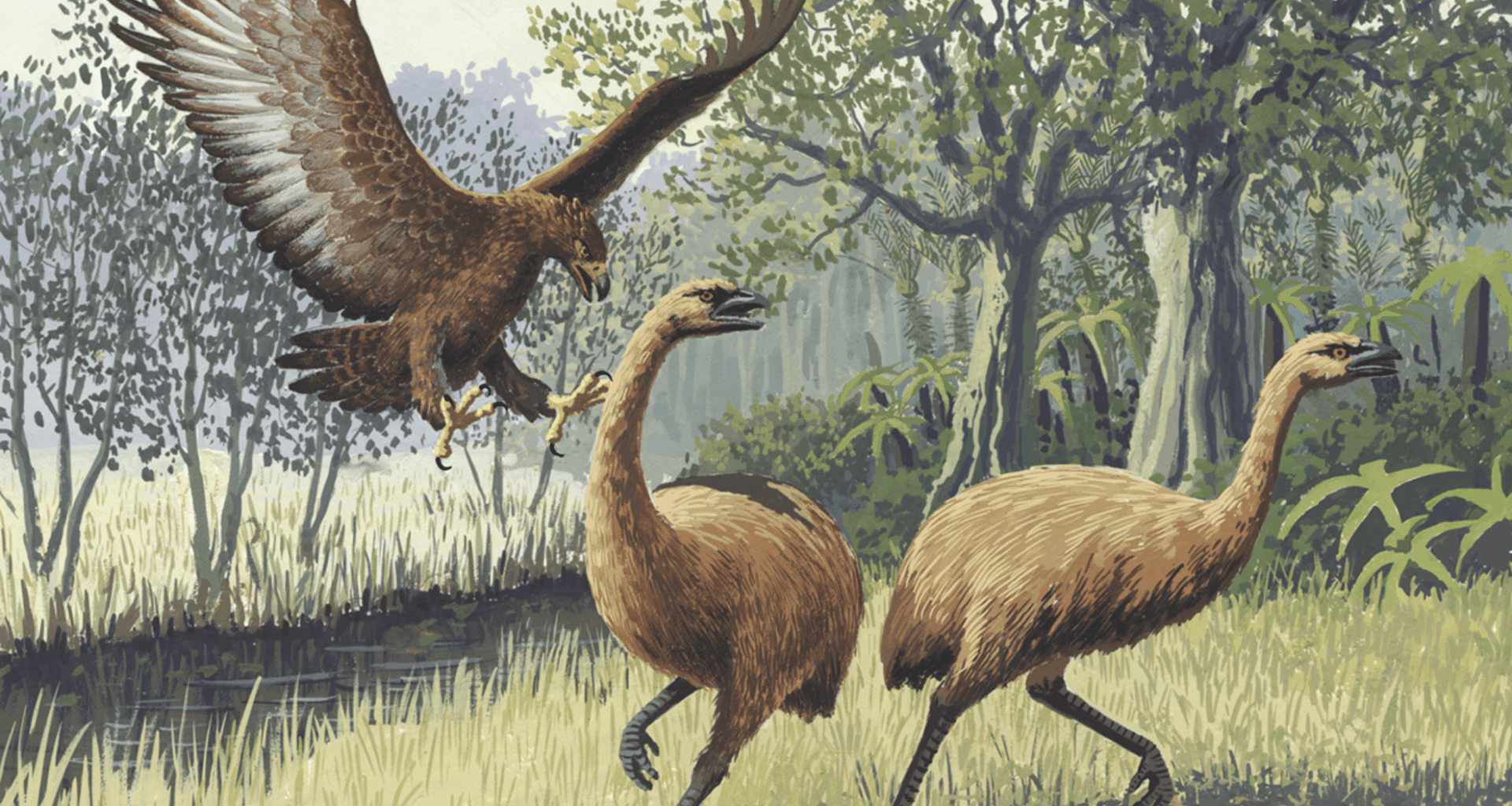A recent study published in the Proceedings of the Royal Society B sheds new light on the Haast’s eagle (Harpagornis moorei), the largest eagle known to have ever lived. This formidable bird, now extinct, once soared across New Zealand’s forests, preying on creatures far larger than modern eagles could ever attempt. Fossil evidence combined with historical accounts reveals a predator uniquely adapted for taking down massive flightless birds like the moa, a strategy that ultimately defined its ecological dominance.
Origins And Size Of The Haast’s Eagle
Appearing in New Zealand between 700,000 and 1.8 million years ago, Haast’s eagle was an apex predator that dwarfed even the largest modern raptors. Females could reach weights of up to 17.8 kilograms (39 pounds), while its wingspan stretched an astonishing 3 meters (nearly 10 feet). To put this in perspective, this wingspan is approximately 1.5 times the height of Michael Jordan, emphasizing the sheer scale of this predator. Its feet and talons, comparable in size to a tiger’s paws, were perfectly designed for gripping and subduing enormous prey.
The sheer size of Haast’s eagle is not just a marvel of prehistoric biology—it also reflects a specialized adaptation to the New Zealand ecosystem. Unlike most eagles, which hunt prey smaller than themselves, Haast’s eagle evolved to target moa, flightless birds weighing up to 249 kilograms, nearly 14 times heavier than the largest females of its species. The evolutionary pressure of an environment dominated by such prey drove Haast’s eagle to develop a combination of strength, agility, and hunting precision unmatched in the modern avian world.
Hunting Strategies And Prey
The hunting techniques of Haast’s eagle, as detailed in the 2021 study, were a combination of modern eagle-like strikes and vulture-inspired feeding strategies. Researchers suggest the eagle used its massive talons to destabilize and injure the moa, delivering a devastating blow to incapacitate its prey. Once the bird was downed, the eagle’s powerful hooked beak completed the kill. This method allowed it to take on prey many times its own weight, a feat impossible for any contemporary raptor.
This hunting specialization also gave rise to speculation about Haast’s interactions with early humans. Historical accounts from missionary and writer James West Stack describe a legendary bird called the pouākai, believed to be Haast’s eagle. Stack recounts instances where the pouākai reportedly seized men, women, and children as food for itself and its young, suggesting the eagle was capable of viewing humans as potential prey in addition to moa. While these accounts blend myth and observation, they illustrate the sheer power and fear this bird must have inspired in the Māori communities.
Extinction And Ecological Legacy
The disappearance of Haast’s eagle around 500 to 600 years ago is closely tied to the extinction of its primary prey, the moa. As humans colonized New Zealand, hunting pressure and habitat changes drove the moa populations to collapse, leaving the eagle without sufficient food sources. This ecological dependency highlights a critical point about predator-prey dynamics: even the most powerful predator cannot survive without a stable prey base.
Fossil evidence, combined with the 2021 Royal Society B study, also reveals fascinating insights into the eagle’s anatomy and behavior. Its disproportionately large size, powerful legs, and robust talons were all evolutionary responses to hunting giant, flightless birds. These adaptations made Haast’s eagle a true specialist, exemplifying how ecosystems can shape extreme physical traits in predators. Today, it remains one of the most extraordinary examples of avian evolution, illustrating the delicate balance between predator, prey, and environment.
